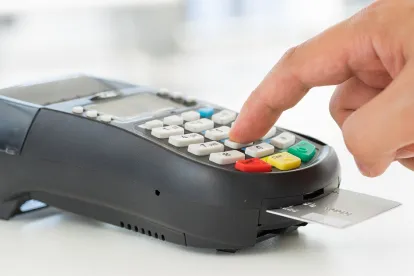If your products are sold online or you operate a website with sales to consumers in California, these changes will impact whether you can obtain “safe harbor” protection under Prop 65.
Over a year after adopting new regulations—which were crafted through an exhaustive 3 year rulemaking process of public workshops, public comments, and revisions to address stakeholders’ concerns—California’s OEHHA (Office of Environmental Health Hazard Assessment) issued a guidance document purporting to change the answer to the question of whether a website warning is sufficient to qualify for “safe harbor” protection or whether a separate type of warning must be provided to the consumer in addition to the website warning. OEHHA, the state entity charged with managing Prop 65, quietly changed its position on the subject and offered so-called “guidance” that imposes much more onerous obligations. If you have already assessed whether you company is in compliance and ready for the new regulations, you should consider reviewing them again.
The new regulations for Prop 65 set to go into effect on August 30, 2018 provide detailed instructions for how to provide consumer warnings for products sold online. In OEHHA’s Initial Statement of Reasons issued on November 27, 2015, OEHHA used the word “or” signaling that if an online warning was provided, companies do not need to provide additional warnings such as an on-product labels, shelf tags, etc.:
A business that is subject to the requirements of Health and Safety Code Section 25249.6 may use one or more of the methods of transmission set out in subsections (a)-(d) to provide the warning. These include product-specific warnings on a shelf tag or shelf sign, on-product warnings, warnings provided via catalog for mail order purchases, warnings provided via the internet during online purchases, or warnings provided via other electronic means – so long as the person receiving the warning is not required to seek it out.
(Initial Statement of Reasons, p. 24 (emphasis added) – https://oehha.ca.gov/media/downloads/crnr/112715warningreg20isor.pdf.)
Similarly, in the Final Statement of Reasons issued on September 1, 2016, OEHHA stated that:
As stated in the ISOR [Initial Statement of Reasons] for these regulations: ‘The “catch-all” provision in subsection (a)(2) is intended to capture existing and future methods of communication, including currently available tools such as electronic shopping carts, smart phone applications, barcode scanners, self-checkout registers, pop-ups on Internet websitesand any other electronic device that can immediately provide the consumer with the required warning. OEHHA does not intend for this provision to be read in such a way that a business may rely exclusively on a website or other device to provide a warning where the individual must seek out the warning. For example, a general reference to a website would not comply with this provision or the Act. Similarly, an invitation to go to a website to determine which products within a given facility require a warning would not comply with the Act.’
(Final Statement of Reasons, p. 85 (emphasis added) – https://oehha.ca.gov/media/downloads/crnr/art6fsor090116.pdf.)
However, in December 2017, OEHHA issued new “guidance” in the form of “Questions and Answers for Business” that contradicts what it previously said during the official rulemaking process:
Q3: For internet purchases, is a warning or hyperlink to a warning also an “electronic device or process” described in Section 25602(a)(2) so that no other warning method is required?
A3: No. To comply with the safe harbor provision for internet purchases, a business would need to use one of the methods in Section 25602, subsections (a)(1)-(4) and provide a separate warning prior to the completion of the purchase of the item as described in Section 25602(b). As an example, a business could provide a warning label on the product and post a photograph of that warning label on the website so that the purchaser sees the warning on the website prior to completing the purchase. The electronic device or process referred to in Section 25602, subsection (a)(2) is a method for providing a warning at a retail store through a scanner/kiosk, barcode reader or other electronic device. It does not refer to an internet website.
(OEHHA Questions and Answers for Business, December 2017, p. 3 (emphasis added) – https://www.p65warnings.ca.gov/sites/default/files/art_6_business_qa_internet_warnings.pdf.)
Bottom-line: Audit your Prop 65 practices to make sure they are in compliance with the new regulations and new guidance. An online warning, alone, may not be sufficient.



 />i
/>i

